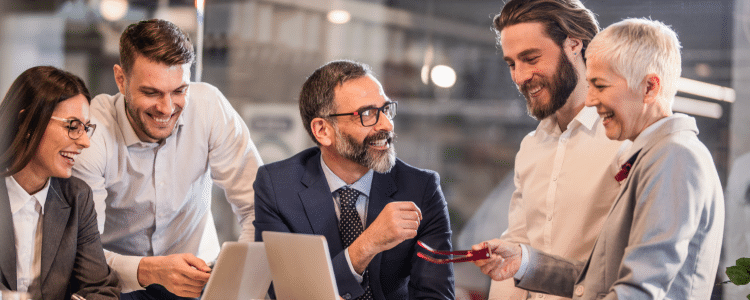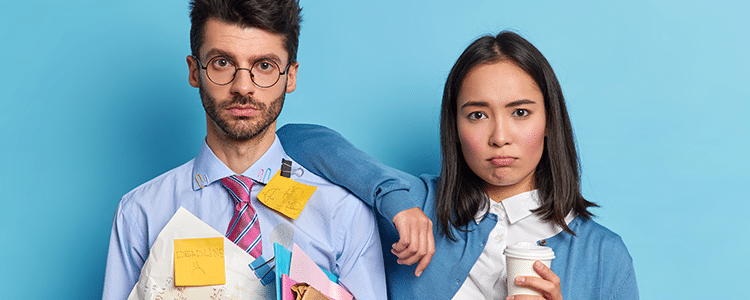Enterprise resource planning (ERP) software helps organizations manage everything from accounting and sales to manufacturing and procurement. While these systems offer many benefits, it isn’t always feasible for companies to run them on-site.
Large-scale ERP systems can be time-consuming to implement, putting strain on in-house IT departments. They can also come with hefty infrastructure investments, which can strain technology budgets.
There are many alternatives to on-site hosting, but today, we’ll be talking about software-as-a-service (SaaS) ERP.
What is SaaS ERP? Let’s take a closer look at this model and the benefits and considerations business leaders need to know.
Software Selection & Process Improvement Case Study
In helping the client get its project back on track, one of our primary focus areas was decreasing their customization needs by improving their processes to align with the system's best practices.
What is SaaS ERP?
SaaS ERP is a type of cloud-based ERP software that runs entirely on a vendor or cloud provider’s servers.
Companies usually purchase a plan on a subscription basis. Vendors offer various subscription plans and levels based on different needs, and companies can adjust their service levels as they scale.
It’s important to note that while people often use the terms “cloud ERP” and “SaaS ERP” interchangeably, they are not the same. Cloud ERP solutions support various delivery models (not just SaaS but IaaS, PaaS, etc.) and can be deployed in various types of cloud environments (i.e., private cloud, hybrid cloud, etc.).
We could dedicate the rest of this post to definitions, but for simplicity’s sake, here’s a definition of some cloud delivery models, other than SaaS:
- Infrastructure as a Service (IaaS): On-demand access to virtualized computing resources like servers, storage, and networking.
- Platform as a Service (PaaS): Cloud platform for building, deploying, and managing applications without managing infrastructure.
- Serverless Computing: Event-driven, pay-per-use model for building and running applications without managing servers.
Benefits of SaaS ERP
Are you considering SaaS ERP as part of your digital transformation? While it’s not right for every organization, here are a few of the top benefits you might obtain.
1. Less Upfront Costs
SaaS ERP requires a much lower initial investment than on-premise software. This is largely because the cost of infrastructure acquisition, installation, and maintenance is shifted to the software vendor. There’s no need for you to purchase any hardware or middleware to make the solution operable.
Another factor that leads to lower costs is the minimal internal IT support needed for SaaS software. The vendor is the one responsible for performing many of the maintenance and support tasks that would otherwise be delegated to your team.
Serverless computing is another cloud model with relatively low upfront costs. However, other cloud models, such as IaaS and PaaS, may cost slightly more.
2. Scalable as Required
Do you anticipate business growth in the near future? Does your organization see seasonal upticks or downturns in demand?
SaaS ERP is more scalable than on-premise ERP, allowing you to adjust your subscription based on your current and projected needs. This way, you can scale up to accommodate more data and more transactions, without any unnecessary business disruptions.
If scalability is a priority for your organization, you might also consider PaaS or serverless computing, which also allow seamless scaling – up or down.
Imagine a manufacturing company implements a SaaS ERP solution and then acquires another company. The company wants both entities to use the same system. Sounds like a nightmare, but is it?
Remember, the company has a SaaS solution, not an on-premise system. The company can simply contact their cloud provider to obtain an additional instance or create a new legal entity in their production environment.
(Learn about manufacturing ERP software.)
3. Pricing Predictability
In addition to upfront savings, another benefit of SaaS ERP is that your monthly or annual cost will stay the same until you change your pricing tier. This way, you always know how much money you’re spending, and you can easily account for it in your budget.
Other subscription models, like IaaS, are pay-as-you-go models. The cost will increase based on usage of memory, storage, CPU, and network bandwidth.
4. Accelerated Go-Live
A successful ERP implementation can take a year or more to complete on-site. With a SaaS solution, you can be up and running much more quickly.
This means teams can take advantage of advanced functionality sooner, allowing you to maximize your ROI.
IaaS, PaaS, and serverless computing also are relatively quick to implement, though not quite as fast as SaaS.
A Look at the Future of SaaS ERP
While not unique to SaaS alone, new and emerging technologies are becoming more mainstream in the business world. This includes technologies such as:
- Enterprise digital assistants
- Robotic process automation (RPA)
- Artificial intelligence (AI)
- Streaming Internet of Things (IoT) data
- Blockchain technologies
These solutions are allowing businesses to do more with the data at their fingertips – and do so without reliance on an IT team.
As the SaaS ERP market matures, you can expect to see even more affordable and accessible solutions that allow businesses of all sizes to make data-driven decisions.
(Learn about AI in ERP.)
Explore Your Cloud Computing Options
What is SaaS ERP? It could be the exact cloud model you need to reach your business goals.
On the other hand, it could be one of many models that fits your current and future needs.
Our business software consultants can help determine what cloud (or on-premise) system is right for you. Contact us below for a free consultation.














